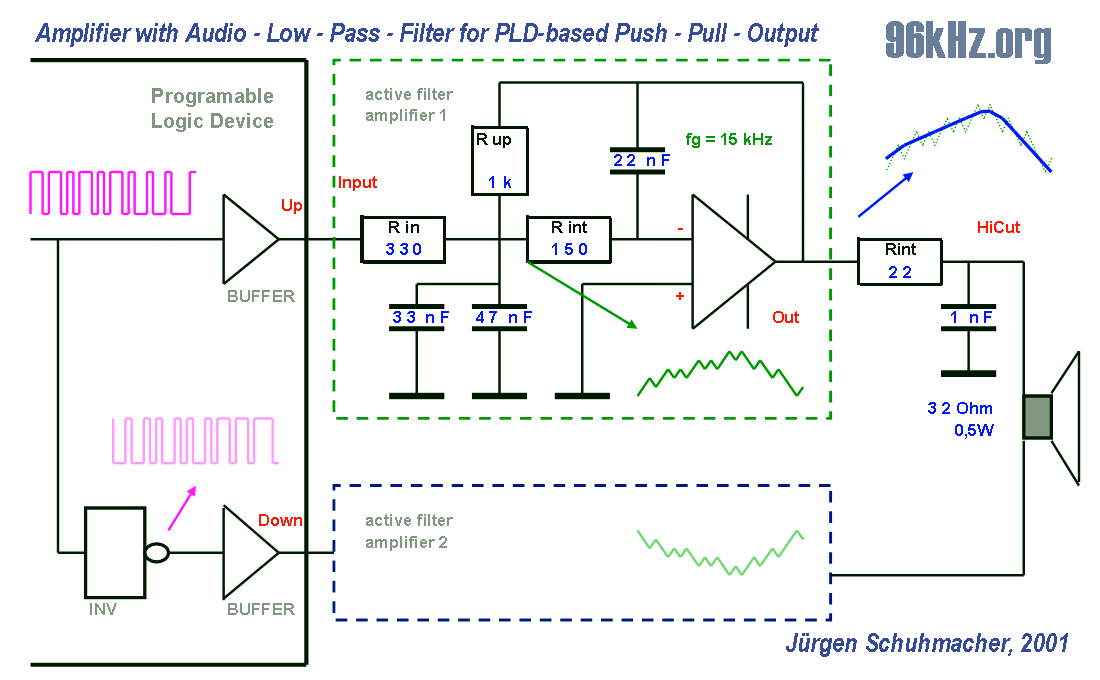| 96 kHz.org |
| Advanced Audio Recording |
A PLD-based Push-Pull Audio Output with a filtering Operational Amplifier Here I will show an idea how to equip digital programmable devices (PLDs) with an audio output. This is required, because logical devices do not have a DAC at all and often only a limited number of PINs are available.
Sound Generation and Output Typically audio signals in logical devices are generated with DDS techniques. The data stream is then transformed into a PWM-, a PDM- or PCM-signal and sent to a DAC or broadcasted via S/PDIF.
Direct Analog Output Here I am using an operational amplifier with a filter design in order to change the digital data stream (here a PCM-signal) directly into an analog signal. The operational amplifier is a typical high current buffer OPAMP and therefore quite slow. But for audio frequencies, it is possible to obtain a signal which is clean and low resistant enough to drive a headphone speaker or a piezo electric device.
(open to enlarge)
The design is intended for a Lattice-PLD (iSP) running at 6 MHz clock frequency. A double OPAMP and only 2 PLD pins are used for the whole operation. Two PLD-pins with complementary PCM signals, like I used in my large distance digital transmission line, are followed by a filtering amplifier circuit and act as a push-pull amplifier. The whole design fits onto a small experimental PCB and next to the IC uses some peripheral devices only. Because of to the limited frequency-bandwidth-product of this OPAMP, some high frequent ripple occurres which is high cutted before entering the headphone speakers. Using active predistortion techniques like known from DSP-based systems then sound can even be improved. Even with a simple second order model focussing the bavhiour of the RC-Filter and the loudspeaker, total linearity can be rised significantly.
Sound Samples
Read More Creating Sine Waves with digital devices like PLDs
|
| © 2001 Jürgen Schuhmacher |
